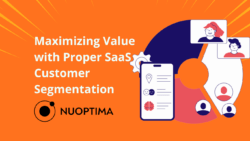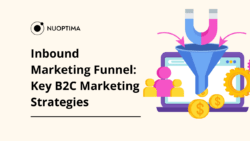| Check out our latest YouTube video where we explore the world of private equity, revealing 8 proven strategies for value creation that successful firms use to maximize their investments. |
As private equity funds become increasingly influential in shaping the world of business acquisitions, it’s important for business owners to understand the post-acquisition strategies employed by these funds.
In the post-COVID era, private equities have moved beyond traditional value creation tactics, such as debt repayment, and have instead adopted more modern and effective strategies. These firms now specialize in leveraging their industry expertise to enhance business revenue, improve operational efficiency, and retain top talent, ultimately boosting the bottom line of the acquired businesses.
In this article, we will explore eight of the most efficient private equity value creation strategies, along with real-world examples. From streamlining operational processes to market expansion and cash flow optimization, these strategies are designed to maximize the potential of acquired businesses.
8 Top Private Equity Value Creation Strategies
Let’s look into some strategies for modern-day value creation in private equity.
1. Streamlining and Hiring Better C-Level

In the field of private equity, achieving transformative success often begins with streamlining, a strategy that prioritizes the removal of B and C players from the organization to make it leaner while also enhancing the quality of the team and its output.
A key aspect of this approach is the strategic appointment of experienced C-level executives, who bring their expertise and fresh perspectives to guide the company in its new direction. These leaders are typically incentivized with an equity-kicker, which aligns their long-term goals with the company’s prosperity. In this strategy, middle market private equity management is often eliminated, resulting in a flatter hierarchy, greater transparency, and faster decision-making. An operating partner plays a crucial role in this context, providing guidance and leveraging their industry knowledge to drive these changes effectively.
Example
Carlyle Group’s acquisition of AZ-EM in 2004 serves as an excellent example of this strategy in action. By focusing on the profitability of their product line and implementing leadership changes, such as appointing a new CEO, Carlyle was able to improve their operational efficiency and direction.
This recalibration resulted in significant improvements in cash flow, which led to a profitable 50% stake sale to Vestar Capital Partners. AZ-EM’s public listing and $1.46 billion valuation in 2010 [1] further validated the effectiveness of the strategy, marking a pinnacle of value creation through operational and leadership synergy.
2. Executing the Buy and Build Strategy

Another private equity value creation method is the buy-and-build approach, which has proven to be an effective and modern technique. In the 1980s, over half of private equity’s value creation came from deleveraging.
However, by 2012, we witnessed a significant change, with around 88% of value being driven by operational improvement and multiple expansions. The buy-and-build strategy is a significant factor in the success of these improvements, as it involves growing operations through acquisitions rather than organically.
It often starts with the private equity fund acquiring a “platform company,” which is a sizable business that can benefit from making smaller acquisitions to add to its product or service offerings.
For example, suppose the platform company operates in the software industry. In that case, the PE fund might acquire smaller software companies to broaden the platform’s offerings, or if the company is a network of dental practices, it might add more physical locations to expand its geographical reach or service offerings.
In both cases, the multiples paid for small bolt-on acquisitions are significantly lower than what the platform organization is trading at. When you integrate the profit and revenue generated by the smaller companies into the platform company, the resultant revenue and profit can be multiplied using the multiplier of the larger company rather than the small companies. This creates value for the organization, and the operational growth levers come from various cost and revenue synergies.
This strategy is a game-changer. It unlocks growth by expanding capabilities, improving efficiency, and tapping into new markets. Ultimately, it leads to a larger, more competitive business that stands out in the industry, commanding a higher valuation and setting the stage for a successful future exit.
Example
A Boston-based PE fund called BV Investment Partners owns Veracross, a leading provider of cloud-based school information systems for independent schools. A big chunk of the growth behind Veracross comes from acquisitions in the US, Australia, and, most recently, the UK.
If you want to learn more about the buy-and-build PE value creation strategy, you can listen to this episode of our SaaS Minds podcast, where we interviewed Simon Hay, the founder of Firefly, the UK EdTech SaaS business which was acquired by Veracross a little over a year ago.
3. Leveraging Digital Transformation for Competitive Advantage

Private Equity funds often acquire businesses that have outdated IT systems or no systems at all. To revamp such businesses, PE firms usually bring in digital transformation and growth agencies, such as NUOPTIMA. These agencies help implement digital marketing strategies to increase the digital presence of the business. Additionally, they work on automating processes and improving operations to increase efficiency and generate cash.
Example
NUOPTIMA works with several companies that are either owned by Private Equity or have a significant portion of their business owned by Growth Equity funds. Most recently, we have been assisting Shopware, a leading Content Management System (CMS) for larger merchants, which was backed by Carlyle, one of the largest PE funds out there.
Carlyle, in collaboration with PayPal, invested $100m in Shopware [2], and we have been helping them improve their current ranking, with the ultimate goal being to get them to rank number one in Google for the top search terms of their Ideal Customer Persona (ICP).
4. Product Diversification and Market Expansion

Private equity firms can foster growth and increase their market share by expanding their product offerings and exploring new markets. This strategy involves developing new products or services that align with the existing portfolio and exploring geographical expansions to capture new customer segments.
This can be achieved through the buy-and-build strategy that we discussed earlier, but it is also possible to allocate more budget to go after a certain market segment or invest in R&D to launch new products.
Example
The collaboration between Cinven and Phadia, a leading provider of in-vitro allergy and autoimmunity diagnostics, has demonstrated the effectiveness of this strategy since its acquisition in 2007. Cinven guided Phadia in the launching of two advanced diagnostic instruments, broadening its product range and marking its entry into pivotal Asian markets.
These strategic steps, coupled with a revamped marketing approach and an expanded sales force, elevated Phadia’s EBITDA from €96 million to €146 million. This groundwork facilitated Phadia’s acquisition by Thermo Fisher in 2011 for €2.47 billion, securing a 3.4x investor return and a €1 billion capital gain.
5. Optimising Cash Flow Conversion Cycle

Optimizing the cash flow conversion cycle is vital for improving a company’s financial stability and operational efficiency. It involves renegotiating payment terms with suppliers and clients, resulting in favorable changes in both payables and receivables. This approach leads to increased and faster cash flow for the organization. Selling off non-core assets is also a common tactic to free up more cash.
In addition to this PE value creation strategy, it is worth prioritizing recurring revenue over project-based revenue. By shifting revenue streams from one-off transactions to more recurring ones, a business can have better revenue predictability and cash flow visibility.
Having more cash flow available means money can be spent more efficiently for growth, to pay off debts, or both. This not only secures the financial health of the business but also increases its value for potential future acquirers.
Example
In January 2022, Alphagreen, in collaboration with NUOPTIMA, acquired a US-based eCommerce brand in the home and fragrance space [3], and we were able to grow the brand by five times within the first 24 months.
However, what’s even more impressive than the increase in revenue and profit was our ability to generate a lot of cash by improving the payment terms with suppliers and unlocking non-dilutive debt instruments to fund marketing efforts, as well as obtaining trade financing from banks for inventory purchases. This freed-up cash allowed us to purchase more inventory, launch new products, and expand into four new regions.
6. Leverage Effect

To achieve better returns on their equity investment, private equity funds use leverage to finance a significant portion of their acquisitions, which is often up to 80% of the total acquisition value. The debt amount is then recorded on the balance sheet of the acquired company and will be repaid using the company’s own cash flow.
Leverage offers two advantages for private equity. First, it boosts their cash returns since they don’t need to use as much of their own cash to finance an acquisition. Secondly, it provides an instrument for financial discipline as the business has much more pressure to cut costs and grow at the same time. Needless to say, this is a delicate balance for both the PE fund and the management team of the portfolio company.
Example
Imagine an athlete training with added weights. Initially, the extra load increases pressure, demanding more effort for each movement. However, over time, this resistance builds the athlete’s strength and resilience, preparing them for higher performance levels.
Similarly, the leverage effect in business challenges a company by introducing debt, which, while increasing financial pressure, simultaneously cultivates a stronger, more disciplined organization. This resilience is crucial for navigating market dynamics and achieving sustained growth, much like the athlete who emerges stronger and more capable.
7. Enhancing Operational Efficiency Through ESG Initiatives

Integrating Environmental, Social, and Governance (ESG) initiatives into business operations is not just about sustainability; it’s also about enhancing brand reputation. Nowadays, numerous private equity firms recognize the value of ESG practices, from energy efficiency and improved supply chain management to enhanced workforce engagement and safety.
This private equity value creation plan aligns with the increasing demand from consumers and investors for responsible business practices, which coincidentally makes companies more competitive and attractive. By embedding ESG considerations into their core operations, businesses can drive efficiency, attract more customers, and meet the higher standards of modern investors.
Example
CVC’s revamp of Poland’s top convenience chain, Zabka, highlights ESG’s impact. Strategic initiatives like updating refrigerants, reducing plastic packaging, and increasing plant-based options improved operations and customer satisfaction.
Zabka’s shift to using 100% recycled plastic bottles and its net-zero CO2 goal by 2050 highlights its commitment to sustainability. These changes led to a 20% increase in sales over three years, a 3.9 percentage point increase in gross margins, and a reduction in franchisee churn.
As a result, Zabka was recognized as the “Green Portfolio Company of the Year” [4]. This ESG focus has also made them more attractive as an employer, highlighting the important role of ESG in modern business growth and operational excellence.
8. Financial Stewardship for Exit

Preparing a business for sale demands implementing stringent financial discipline, enhancing transparency, and bolstering reporting standards. This PE value creation strategy focuses on refining the company’s financial operations to showcase a clear, accurate financial picture to potential buyers.
In the context of preparing for a SaaS exit deal, implementing stringent financial discipline, enhancing transparency, and bolstering reporting standards are key steps. By ensuring accurate financial records and implementing strong reporting mechanisms, businesses can simplify the SaaS buyer due diligence process, potentially increasing their market value. This preparation not only makes the company more appealing to prospective investors but also highlights a commitment to financial integrity and operational excellence, which is crucial for negotiating favorable sale conditions.
Final Thoughts
In the world of private equity business acquisitions, implementing value creation strategies is necessary for the success of the business and to generate a good return on investment. That said, the strategies outlined in this article are meticulously analyzed and prepared well before the acquisition takes place and form the cornerstone of a comprehensive growth plan.
Through commercial, operational, and financial due diligence, experts scrutinize every aspect of the target business and identify opportunities for revenue growth, operational efficiency, and financial optimization. They then create a 100-day value creation plan, which is a detailed step-by-step guide with different value levers to be implemented in the first 100 days after the business is acquired.
Invest in the Services of a Specialized Growth Agency – NUOPTIMA
At NUOPTIMA, we have extensive experience working with numerous private equity funds and individuals seeking to acquire businesses. Our expertise extends beyond conventional growth strategies to include digital due diligence, providing comprehensive insights into the performance and potential of your target businesses.
We also specialize in helping businesses scale to new heights. By utilizing our customized solutions and creative strategies, we enable you to take advantage of growth opportunities and strengthen your market presence.
So, whether your goal is to improve your market positioning, optimize your customer acquisition channels, or enhance your financial performance, our comprehensive approach guarantees a strategic path to success.
Ready to embark on a transformative growth journey? Book a free discovery call with us today!
FAQ
Some common ways private equity firms create value include improving operations, diversifying product offerings, entering new markets, optimizing cash flow and reducing costs, and managing talent in acquired businesses.
Private equity firms need to create value in order to generate returns for investors, who are usually institutional investors like hedge funds, university endowments, and high-net-worth individuals. Creating value ensures the success of the investment and attracts future investors.
The equity value of a company is calculated by subtracting its total liabilities from its total assets. Alternatively, it can be determined by estimating the present value of expected future cash flows, which are then discounted at an appropriate rate. This valuation method is commonly used by investors to evaluate the worth of their ownership stake in the company.
References
- https://www.reuters.com/article/azelectronic-ipo-idUSLDE69Q0GT20101029/[1]
- https://www.pymnts.com/news/investment-tracker/2022/paypal-carlyle-put-100-million-to-expand-german-digital-commerce-platform-shopware/[2]
- https://www.globenewswire.com/en/news-release/2022/07/12/2477757/0/en/Alphagreen-Group-Acquires-96North-a-100-Natural-Aromatherapy-Brand-With-Eye-on-Further-Acquisitions.html[3]
- https://www.cvc.com/media/gsrhodvg/cvc-2021-esg-report-1.pdf[4]



